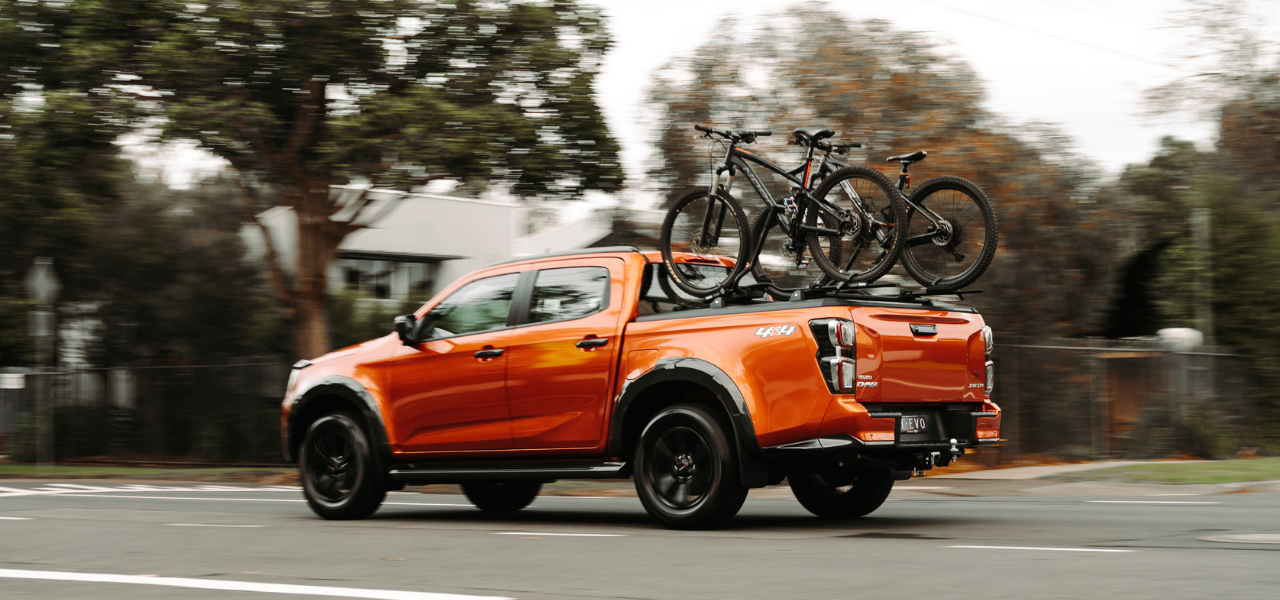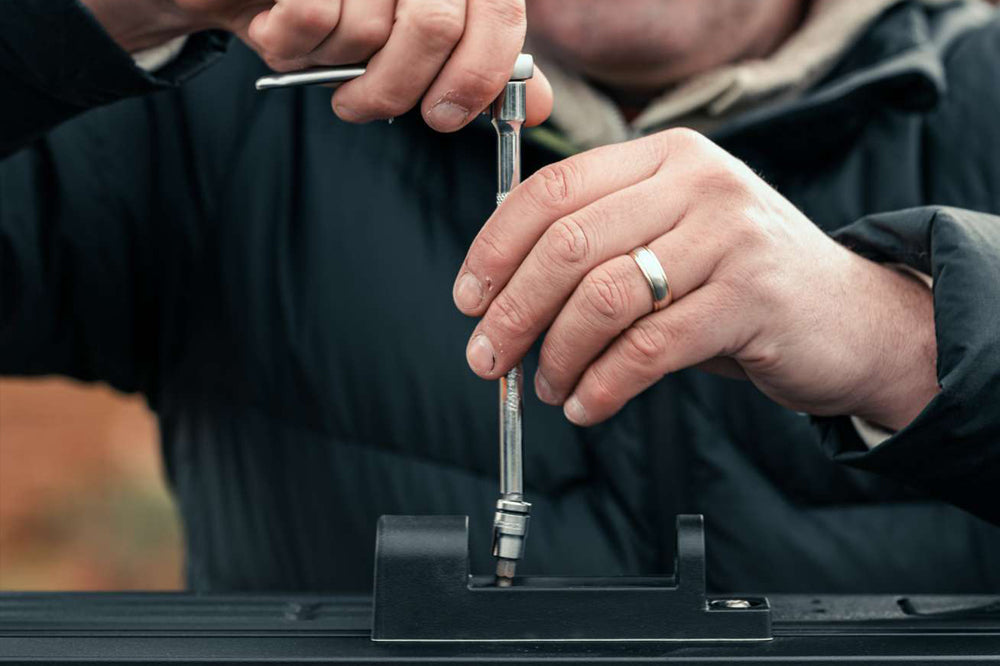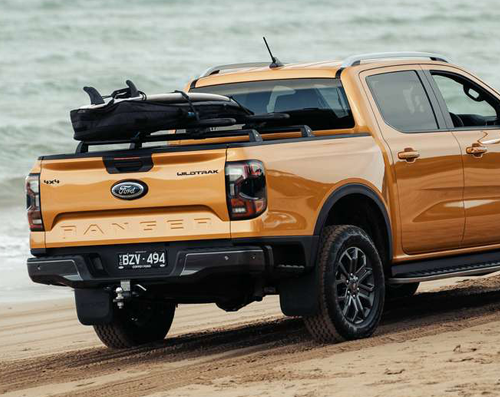
How Much Overhang Can You Have On A Ute?
Transporting oversized loads on a ute can be convenient, but it comes with specific legal obligations. Overhang rules are designed to ensure road safety, protect your vehicle, and keep other road users secure. In this guide, we’ll explore the regulations surrounding ute load overhang limits in Australia, state-specific rules, and practical tips to safely transport overhanging loads.
Understanding Ute Load Overhang Regulations
Load overhang refers to the portion of a load that extends beyond the boundaries of your ute’s tray or body. While carrying oversized loads may seem straightforward, there are crucial legal and safety considerations to bear in mind. If you're carrying a light vehicle or any oversized cargo, it's essential to keep within the legal overhang on ute limits.
Why Adhering to Overhang Regulations Matters
-
Safety: Improperly secured or excessive overhang can lead to accidents by obstructing visibility or creating hazards for other drivers.
-
Legal Compliance: Non-compliance with overhang rules can result in hefty fines or penalties.
-
Load Protection: Ensuring your load is securely attached prevents damage to valuable cargo.
Regulations governing load overhangs vary by state and territory in Australia, making it essential to understand the specific requirements for your region.
General Rules for Ute Overhang Limits
Before diving into state-specific details, let’s examine the general principles applicable across Australia.
Types of Overhangs:
-
Front Overhang: The load extends beyond the front of your vehicle.
-
Rear Overhang: The load projecting beyond the rear of the ute tray.
-
Side Overhang: Items extending over the sides of the vehicle.
Measurement Standards:
-
Rear overhang is typically measured from the rear axle or the end of the tray, depending on the ute’s design.
-
Loads must not exceed a certain percentage of the vehicle’s total length.
Visibility Requirements:
-
Overhanging loads must be marked with high-visibility aids, such as flags during daylight hours or reflective lights at night.
-
Loads extending more than 1.2 meters from the rear must use specific markers to warn other road users.
For detailed requirements, it’s vital to consult the rules for your state or territory.
State-by-State Ute Overhang Regulations
Each Australian state and territory has specific rules regarding ute load overhang limits. Below is a breakdown:
New South Wales (NSW):
-
Rear overhang must not exceed 60% of the ute’s wheelbase.
-
Loads projecting more than 1.2 meters from the rear must display a red flag (day) or red light (night).
-
Side overhang must not exceed 150mm beyond the vehicle’s width.
Reference: https://www.transport.nsw.gov.au/
Queensland (QLD):
-
The rear overhang limit is 3.7 meters from the rear axle.
-
Mark loads extending beyond 1.2 meters with a brightly colored flag or light.
-
Ensure that the total load does not compromise vehicle stability.
Reference: https://www.qld.gov.au/transport
Victoria (VIC):
-
Rear overhang must not exceed 3.7 meters or 60% of the vehicle’s wheelbase.
-
Urban areas may have stricter enforcement on visibility aids.
Reference: https://www.vicroads.vic.gov.au/
Western Australia (WA):
-
Rear overhang is limited to 1.2 meters unless otherwise marked.
-
Secure loads firmly to prevent movement.
Reference: https://www.transport.wa.gov.au/
South Australia (SA), Tasmania (TAS), Northern Territory (NT), and Australian Capital Territory (ACT):
-
Regulations align closely with national standards but vary slightly in enforcement. Always verify specific regional rules.
Reference:
For complete legal details, refer to local transport authority guidelines.
Why Overhang Limits Matter?
Understanding and following overhang rules is critical for:
-
Accident Prevention: Overhanging loads can obstruct drivers’ views or pose risks during sudden stops.
-
Avoiding Penalties: Fines for non-compliance can range from hundreds to thousands of dollars, depending on the violation.
-
Protecting Vehicle Performance: Excessive overhang affects stability and handling, particularly at high speeds.
By adhering to these rules, you ensure both your safety and that of other road users.
Tips for Transporting Overhanging Loads Safely
Carrying an overhanging load doesn’t have to be stressful. Follow these tips to ensure your cargo is secure and compliant:
1. Measure Your Load Accurately
-
Use a tape measure or laser device to confirm the exact dimensions of your load.
-
Compare the measurements against your ute’s specifications to determine permissible overhang. If you're unsure about the legal overhang on ute limits, consult your state’s regulations.
2. Mark Overhanging Loads Clearly
-
Attach red or brightly colored flags to overhanging sections during the day.
-
Use reflective tape or lights for nighttime visibility. This is essential for rear overhangs exceeding 1.2 meters.
3. Secure the Load Properly
-
Invest in high-quality securing tools like tie-down straps, bungee cords, and cargo nets. Check out RealTruck’s cargo carrier racks for enhanced load stability.
-
Avoid over-tightening, which can damage the load or securing equipment.
4. Inspect Your Vehicle Regularly
-
Perform routine checks to ensure your ute’s tray, racks, and securing tools are in good condition. RealTruck’s ladder racks are a reliable option for securing long loads. Also, always check your wheels for stability before hitting the road.
Be Informed and Travel Confidently
Transporting oversized loads on your ute is manageable with the proper knowledge and tools. By understanding and adhering to overhang regulations and meeting the safety requirements, you can:
-
Ensure road safety for yourself and others.
-
Avoid unnecessary fines or legal issues.
-
Protect your vehicle and cargo from damage.
For the best load management solutions, explore RealTruck’s range of accessories, including cargo carriers and ladder racks. Stay informed and travel confidently with a secure and compliant setup for your ute.

